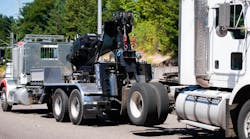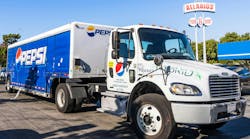On Oct. 19 of this year, Brian J. Fosdick of Marshfield, MA, was fatally injured while performing “some kind of tire-changing operation” on a septic truck. A reporter from the local newspaper called me that afternoon looking for more information on multi-piece rim service. While the Occupational Safety and Health Administration (OSHA) is investigating the exact cause of the accident, from what I was told, it appears to be another incident that could have been avoided. This seems to be a common theme regarding fatalities and truck-tire service because mechanics and maintenance personnel working for transportation companies appear to have a higher risk of being injured. I have participated in several investigations over the past few years and in almost every instance, the victims were unaware of the risks because they were not properly trained.
While every inflated truck tire and wheel has enough explosive force to cause a serious or fatal injury, the multi-piece assemblies are clearly the most dangerous. To begin with, the rim components will typically be at least 20-30 years old, so finding the identification stamps to determine if they match is often next to impossible. It's also important to note that decades of service will result in some degree of corrosion and pitting. The end result is a heightened level of unpredictability, particularly when removing the inflated assembly from the vehicle.
OSHA published a demount/mount chart to provide employees with additional information outside of Regulation 29 CFR 1910.177. The chart outlines the steps that must be taken to reduce the chances of an accident. Based on my conversation with the reporter, Mr. Fosdick would probably be alive and well if OSHA guidelines had been followed.
Before loosening the lug nuts on any multi-piece demountable (or Dayton) rim assembly, both tires in a dual position must always be deflated. This procedure has been the subject of great debate over the years as it significantly increases the amount of time that it takes to remove the tires. Productivity experts will point to the fact that it doesn't make sense to deflate a tire that isn't flat, but they aren't the ones standing in front of a potential bomb. Again, the level of unpredictability when removing an inflated multi-piece tire and rim assembly warrants complete deflation. If the tires are not pressurized, then the “bombs” are essentially diffused.
To the average mechanic at the average fleet, truck-tire service appears to be so simple a caveman could do it. After all, it's just “nuts and bolts,” so rather than watch the work go to an outside vendor, employees decide to protect their jobs and save the company some money. When dealing with tubeless tires on single-piece rims, the risks related to that practice are notably minimal. However, the hazards associated with multi-piece service are more severe, which means the untrained employee may be completely unaware of the consequences when safety procedures are not followed.
OSHA provides weekly summaries of fatalities and catastrophes that occur in the workplace. The majority of the accidents related to tire and wheel service over the past 12 months did not take place in a traditional tire dealership, which doesn't make sense from a statistical perspective. One would think that the employees of tire dealers would have the most risk simply because they service a greater number of assemblies on a daily basis. Maybe it's just luck, but I believe that professional tire service technicians are trained to recognize the hazards so they see a lot more than just a few nuts and bolts.
Kevin Rohlwing can be reached at [email protected]


